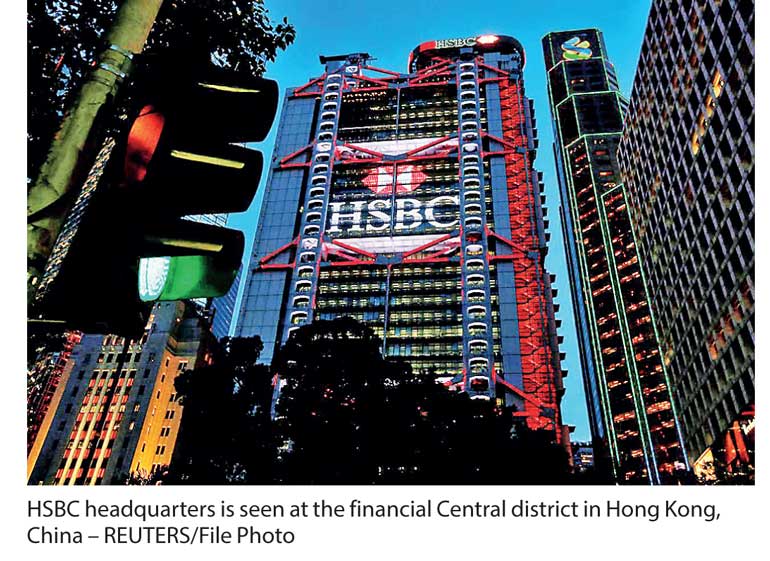Thursday Mar 06, 2025
Thursday Mar 06, 2025
Wednesday, 27 September 2017 00:00 - - {{hitsCtrl.values.hits}}
 HONG KONG (Reuters): Global banks including Citigroup and HSBC are boosting their staff and presence for offerings in yuan – from capital market solutions to hedging – as China’s drive to build a modern Silk Road fuels demand.
HONG KONG (Reuters): Global banks including Citigroup and HSBC are boosting their staff and presence for offerings in yuan – from capital market solutions to hedging – as China’s drive to build a modern Silk Road fuels demand.
The push rides on hopes Chinese President Xi Jinping’s policy of building a Silk Road to expand global trade and influence of China will accelerate the internationalisation of yuan, also known as the renminbi (RMB).
The Chinese currency’s ranking as a world payment currency fell to sixth in June from fifth two years ago, according to industry tracker SWIFT, as capital outflow curbs take some shine off the yuan.
However, bankers believe Chinese firms’ aggressive expansion in countries from Vietnam to Belgium could reverse this trend as such businesses demand products and services denominated in their home currency.
“As our clients increase their operations across the BRI (Belt and Road) countries ... we are seeing a pick-up in demand for RMB,” said Rajesh Mehta, Citi’s Asia Pacific treasury and trade solutions head.
Citi is planning to add 25 staff to work in eight key trade corridors over the next one year under the Belt and Road programme, some of them redeployed from other parts of Asia Pacific to South Korea, Vietnam, China, Japan and Hong Kong.
Its yuan-linked services include trade finance, hedging, cash management, and capital markets solutions in most of the 58 markets across the Belt and Road countries. It also has nine China-specific business desks along the Silk Road corridor.
Unveiled in 2013, the Belt and Road project is aimed at connecting China’s economy by land and sea to Southeast Asia, Pakistan and Central Asia, and beyond to the Middle East, Europe and Africa.
Chinese acquisitions in the 68 countries officially linked to the initiative are soaring and totalled $33 billion in the year to mid-August, surpassing the $31 billion tally for all of 2016.
Standard Chartered has set up a “core team” in China for Belt and Road projects, and is also building a team of “corridor bankers” along the main Belt and Road trading routes including in Europe, said its global head of RMB solutions Carmen Ling.
Although HSBC and other global banks have used the Silk Road in advertising and speak enthusiastically of leveraging the network, analysts say foreign banks would find it harder to compete with Chinese banks for yuan loans due to higher costs of funding.
Therefore, global banks are expected to vie for a bigger share of the yuan-denominated fee income-based products and services by beefing up their expertise and resources in that segment, they said.
To tap that, HSBC, which makes more than half of its profits in Asia, is relying on its 24 China-dedicated business desks across the globe and has started hiring Chinese-speaking staff in client facing teams in Europe.
“The majority of the capital and trade transactions are in US dollars along the Belt and Road corridor now, but we are now seeing a pickup in usage of RMB,” said Vina Cheung, global head of RMB internationalisation at HSBC.
“We are hiring in the way we have right resources to support that growth.”
Discover Kapruka, the leading online shopping platform in Sri Lanka, where you can conveniently send Gifts and Flowers to your loved ones for any event including Valentine ’s Day. Explore a wide range of popular Shopping Categories on Kapruka, including Toys, Groceries, Electronics, Birthday Cakes, Fruits, Chocolates, Flower Bouquets, Clothing, Watches, Lingerie, Gift Sets and Jewellery. Also if you’re interested in selling with Kapruka, Partner Central by Kapruka is the best solution to start with. Moreover, through Kapruka Global Shop, you can also enjoy the convenience of purchasing products from renowned platforms like Amazon and eBay and have them delivered to Sri Lanka.
Discover Kapruka, the leading online shopping platform in Sri Lanka, where you can conveniently send Gifts and Flowers to your loved ones for any event including Valentine ’s Day. Explore a wide range of popular Shopping Categories on Kapruka, including Toys, Groceries, Electronics, Birthday Cakes, Fruits, Chocolates, Flower Bouquets, Clothing, Watches, Lingerie, Gift Sets and Jewellery. Also if you’re interested in selling with Kapruka, Partner Central by Kapruka is the best solution to start with. Moreover, through Kapruka Global Shop, you can also enjoy the convenience of purchasing products from renowned platforms like Amazon and eBay and have them delivered to Sri Lanka.